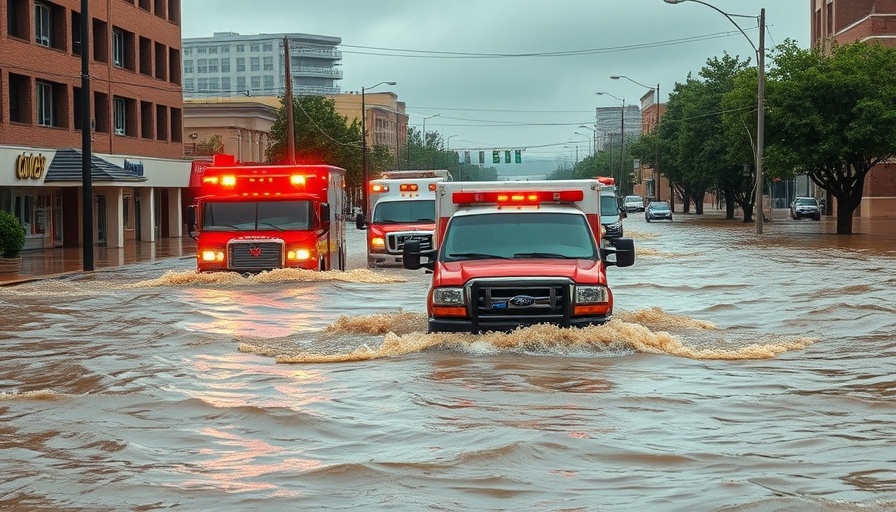
A Deep Dive into Texas Floods: Forecasting, Response, and Accountability
As Central Texas grapples with the aftermath of devastating floods that claimed at least 90 lives, the spotlight has turned toward both the White House and the National Weather Service (NWS). Questions swirl around whether timely alerts and sufficient personnel could have mitigated the catastrophic damage. The unfolding situation, which has drawn critical responses from various political figures, emphasizes the vital role of effective forecasting in emergency response.
White House Stands Firm on the National Weather Service
In a recent press briefing, White House Press Secretary Karoline Leavitt defended the NWS against claims of inadequacies. “Despite the extrapolation of facts into political rhetoric, we believe our weather forecasting offices executed timely and precise warnings during this catastrophic time,” Leavitt asserted, underscoring that criticism amid a crisis risks overshadowing the need for community recovery.
Political Dynamics: What’s at Stake?
Senator Chuck Schumer, among other leaders, has called for a thorough investigation into NWS operations, particularly in light of staffing cuts that some believe contributed to the floods' impact. Schumer’s inquiry raises essential questions about how our emergency services are funded and staffed, especially in an era of unpredictable climatic events, a sentiment echoed by numerous Texas residents frustrated with the government's preparedness.
The Complexity of Urban Flood Predictions
The NWS had issued warnings just hours before the floods, conducting a delicate balancing act between forecast reliability and potential public panic. Despite this, discrepancies surfaced as local officials expressed that the intensity of the rainfall had not been adequately communicated. Such misalignments illustrate the intricate dynamics between meteorology, local governance, and political accountability.
Lessons Learned: Past vs. Present
Reflecting on the 2017 Hurricane Harvey, where forecasting accuracy was lauded, the contrasting responses draw a line between ideal and practical results. Experts agree that the evolution of forecasting technology has paved the way for better predictions; however, the execution often hinges on local leadership and their willingness to act swiftly in emergencies. As Ted Cruz noted, “It should not happen in a bitter and partisan sense. It should happen in a reasonable retrospective manner.”
Resources Needed for Future Preparedness
Proposed improvements point towards enhancing NWS staffing and technological support. Increased funding could bolster local offices that often find themselves in the crosshairs of criticism when disaster strikes. Collaborating with community leaders to establish robust emergency plans based on enhanced data analytics could pave the way for more effective responses in the future.
Immediate Community Support: The Foreground of Recovery
While the political narratives continue to unfold, immediate attention is directed toward the victims and their families. Recovery involves more than logistics: it speaks to the heart of our communities, needing collective support to rebuild lives. Emergency services continue searching for the missing, showcasing the resilience and dedication of first responders amid overwhelming circumstances.
Conclusion: A Call for Unity and Action
The aftermath of these floods serves as a sobering reminder of climate unpredictability and the need for responsive governance. As discussions progress around accountability within the NWS and federal oversight, the focus must remain on the victims of this tragedy. Moving forward, proactive measures such as lobbying for increased resources and engaging in community preparedness initiatives can make a considerable difference. We encourage all Texans to stay informed about local weather updates and get involved in community-based disaster preparedness initiatives.
 Add Element
Add Element  Add Row
Add Row 



Write A Comment